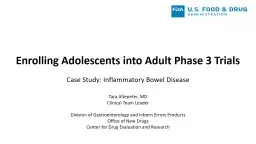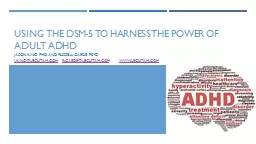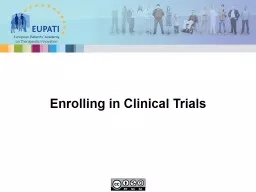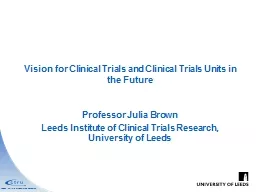PPT-Enrolling Adolescents into Adult Phase 3 Trials
Author : yoshiko-marsland | Published Date : 2019-11-07
Enrolling Adolescents into Adult Phase 3 Trials Case Study Inflammatory Bowel Disease Tara Altepeter MD Clinical Team Leader Division of Gastroenterology and Inborn
Presentation Embed Code
Download Presentation
Download Presentation The PPT/PDF document "Enrolling Adolescents into Adult Phase 3..." is the property of its rightful owner. Permission is granted to download and print the materials on this website for personal, non-commercial use only, and to display it on your personal computer provided you do not modify the materials and that you retain all copyright notices contained in the materials. By downloading content from our website, you accept the terms of this agreement.
Enrolling Adolescents into Adult Phase 3 Trials: Transcript
Download Rules Of Document
"Enrolling Adolescents into Adult Phase 3 Trials"The content belongs to its owner. You may download and print it for personal use, without modification, and keep all copyright notices. By downloading, you agree to these terms.
Related Documents














